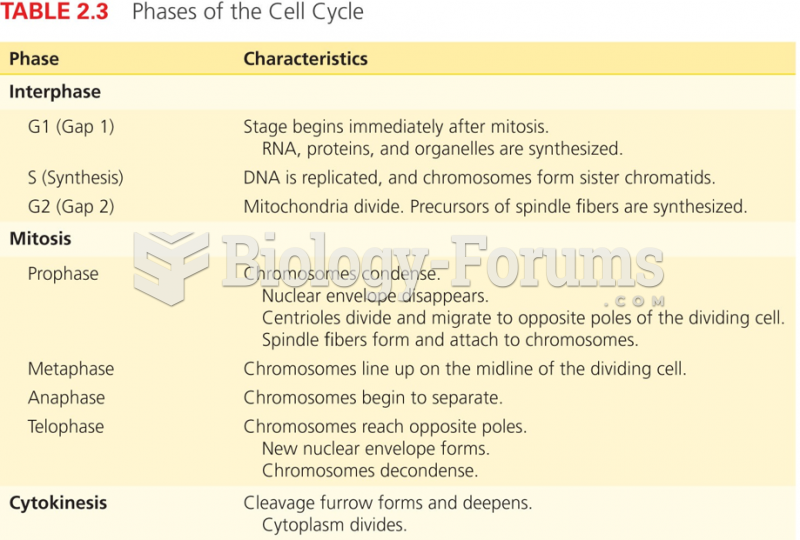This topic contains a solution. Click here to go to the answer
|
|
|
Did you know?
Famous people who died from poisoning or drug overdose include, Adolf Hitler, Socrates, Juan Ponce de Leon, Marilyn Monroe, Judy Garland, and John Belushi.
Did you know?
It is difficult to obtain enough calcium without consuming milk or other dairy foods.
Did you know?
Malaria mortality rates are falling. Increased malaria prevention and control measures have greatly improved these rates. Since 2000, malaria mortality rates have fallen globally by 60% among all age groups, and by 65% among children under age 5.
Did you know?
Asthma cases in Americans are about 75% higher today than they were in 1980.
Did you know?
Less than one of every three adults with high LDL cholesterol has the condition under control. Only 48.1% with the condition are being treated for it.
 When horses lie down to sleep, others in the herd remain standing, awake or in a light doze, keeping
When horses lie down to sleep, others in the herd remain standing, awake or in a light doze, keeping
 The Dederiyeh I infant from Syria preserves nearly the entire skeleton of a 17- to 19- month-old Nea
The Dederiyeh I infant from Syria preserves nearly the entire skeleton of a 17- to 19- month-old Nea





